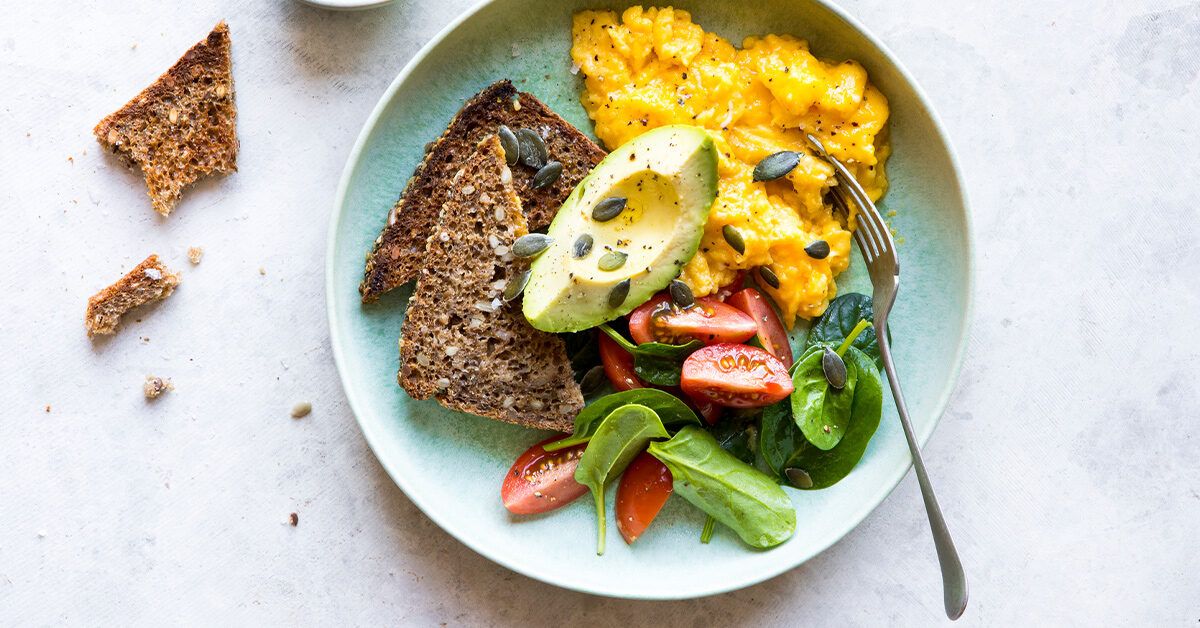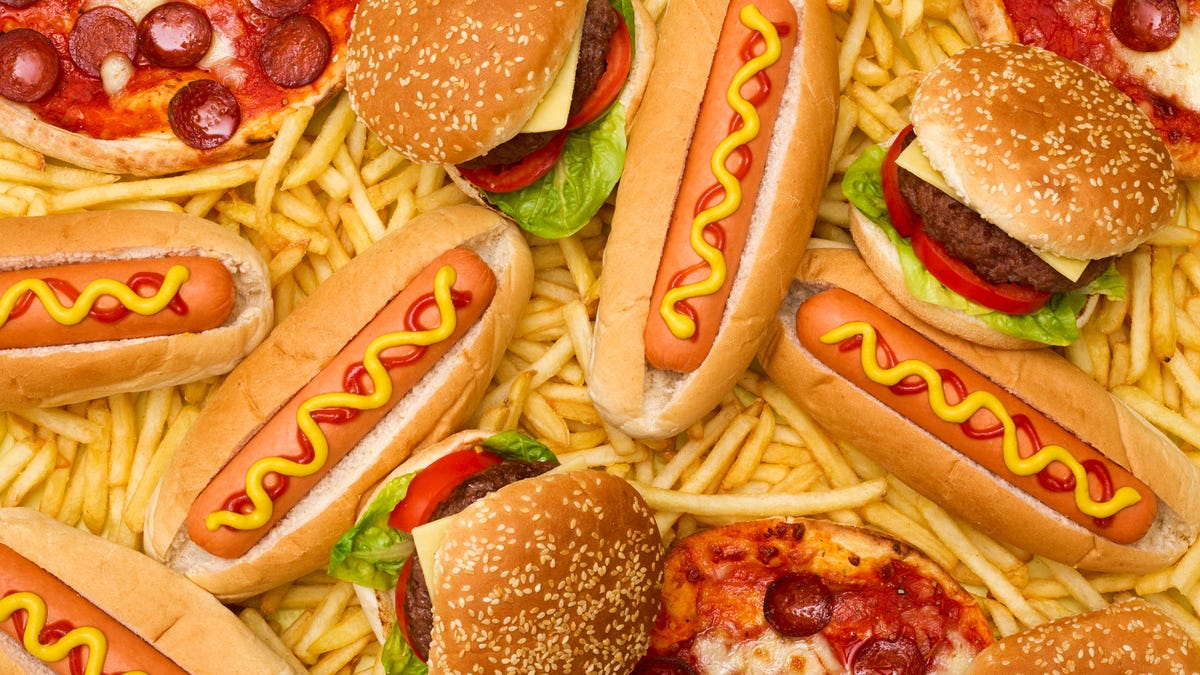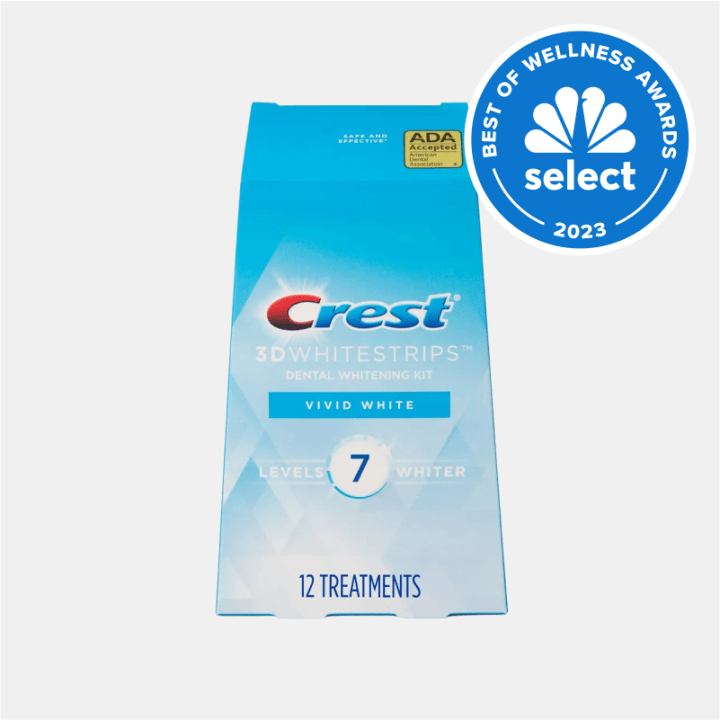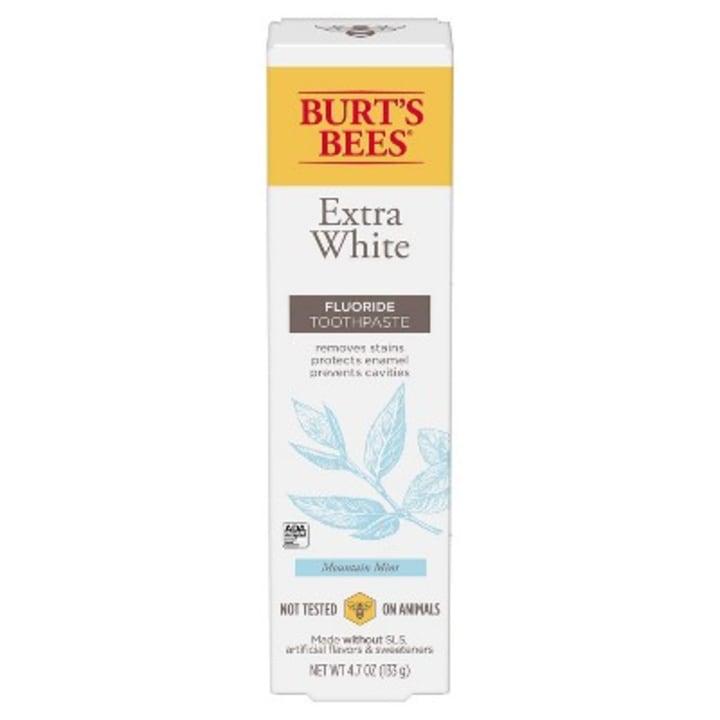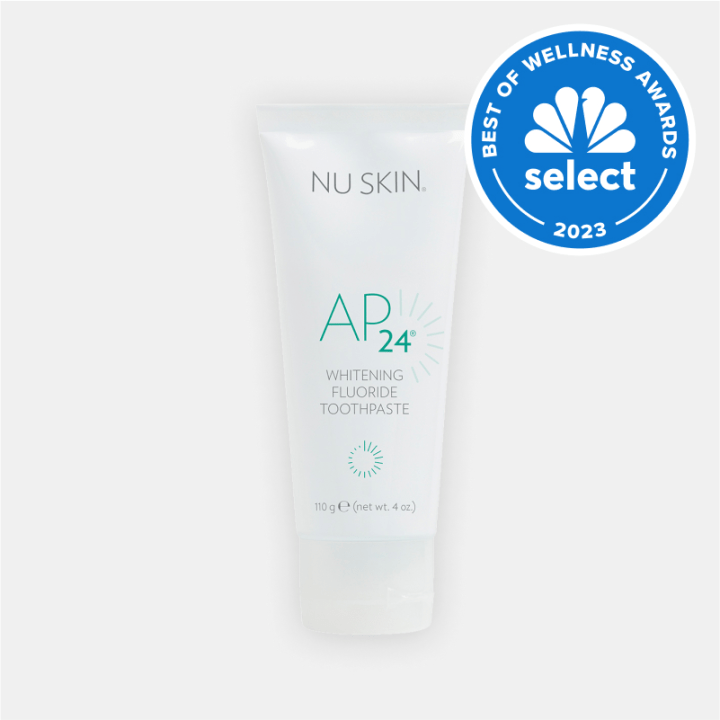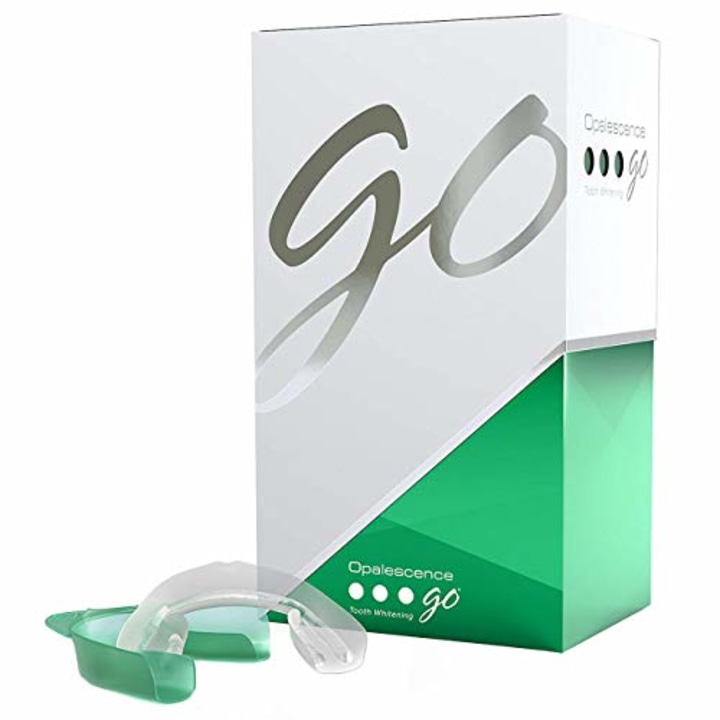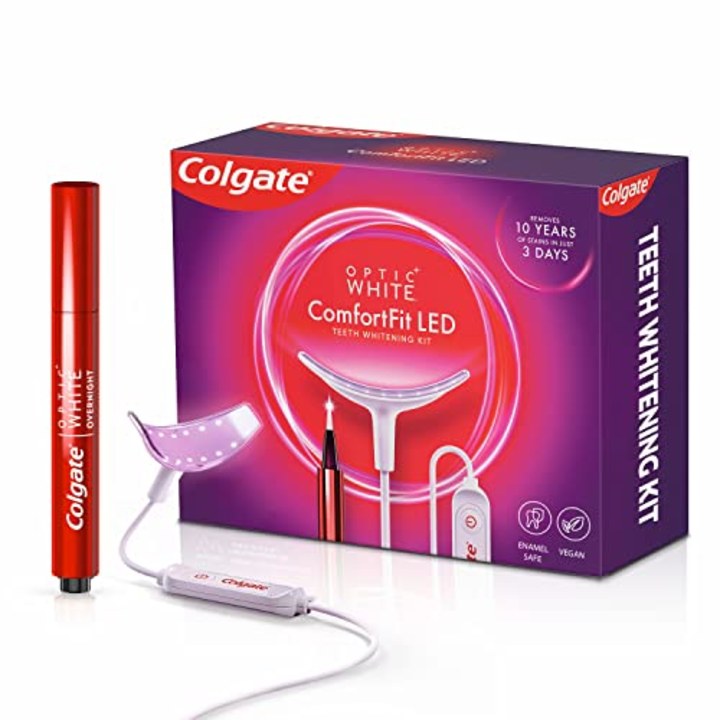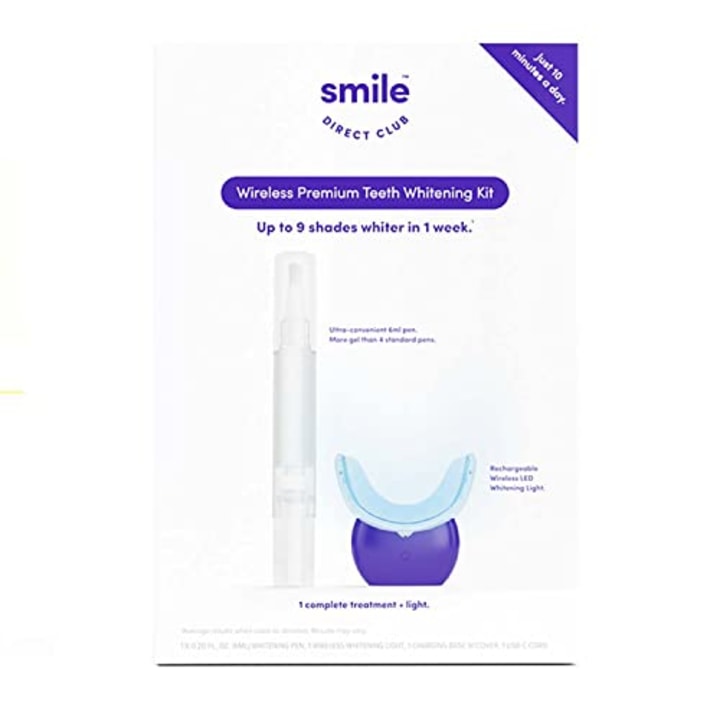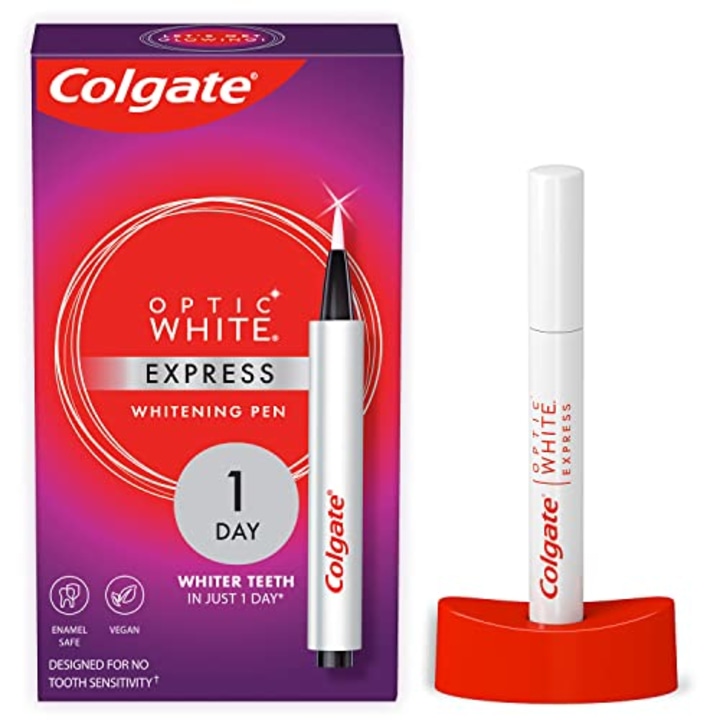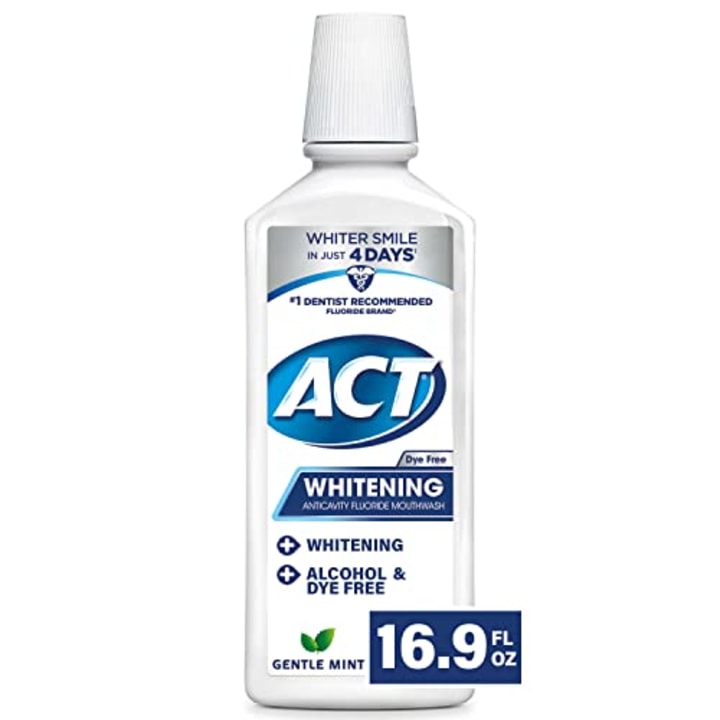You’re doing everything right: brushing your teeth twice a day for the recommended two minutes using an electric or manual toothbrush, remembering to floss, using mouthwash and brushing your tongue. Still, even the most dedicated dental hygiene practices only go so far to avoid staining, especially for those of us who are coffee, red wine or dark fruit lovers. Going to the dentist for professional teeth whitening is an option, but it’s often expensive and time consuming. Whitening treatments at New York City’s Dntl Bar, for instance, range from $275 to $575, and an appointment can last up to 90 minutes.
SKIP AHEAD At-home teething whitening products | Is at-home teeth whitening safe?
Thankfully, many oral care brands offer more cost effective, over-the-counter teeth whitening products you can use at home — they aren’t as strong or effective as in-office treatments, but they can tackle more minor discoloration, experts told us. To help guide your search on how at-home teeth whitening products can work for you, we talked to dentists about whitening toothpastes, whitening trays with built-in LED lights and more. We also rounded up a handful of at-home teeth whitening products to consider, including options with the American Dental Association’s Seal of Acceptance.
Our top picks
How we picked the best at-home teeth whitening treatments
To highlight the best at-home teeth whitening treatments, experts told us to prioritize the following:
- Active ingredients: Hydrogen peroxide and carbamide peroxide are common whitening agents found in at-home teeth whitening treatments.
- Strength: A higher percentage of active ingredients means they’re stronger. But the most powerful whitener may not be the best option for you, says Dr. Matt Messina, a dentist and spokesperson for the ADA. If you’ve never used whitening products before or you have a history of tooth sensitivity, Messina recommended starting with products that contain lower concentrations of active whitening ingredients.
- Product type: At-home teeth whitening treatments are available as toothpastes, whitening pens, whitening trays and more. Think about which you prefer and which best fits into your lifestyle.
- ADA Seal of Acceptance: The ADA Seal of Acceptance is the “gold standard” for oral care products, experts told us — when you see that seal, it means the brand submitted data and other materials to the ADA and the organization determined that the product meets specified safety and efficacy requirements. This does not mean that whitening products without the ADA Seal are ineffective — it just means brands have not submitted their products for the ADA to review.
Best at-home teeth whitening treatments in October 2023
With expert shopping tips in mind, we rounded up a handful of at-home teeth whitening products across type and price point. We included options Select staff members have tried themselves, 2023 Select Wellness Award Winners and other options we think you should know about.
ADA-approved at-home teeth whitening products
Whitening strips are coated with a thin layer of hydrogen peroxide, which is a whitening agent that bleaches teeth, the ADA says. Whitening kits come with multiple strips for the upper and lower teeth, and you use them multiple days in a row for a set amount of time each day to gradually whiten your teeth.
Crest 3D Whitestrips are currently the only ADA-approved whitening strips — they also won best teeth whitening strips during Select’s 2023 Wellness Awards. The Classic Vivid strips come in a pack of 20, which is enough for 10 treatments, the brand says. The strips are made with hydrogen peroxide and are designed with a no-slip grip that Crest says helps them stick on teeth. Crest offers other types of whitestrips including Brilliance White, Glamorous White and Sensitive, all of which are ADA-approved.
According to the ADA, whitening toothpaste primarily relies on abrasives to help remove surface stains on teeth. All toothpaste is mildly abrasive to scrub teeth clean, but whitening toothpaste typically contains ingredients that specifically target surface stains, like sodium bicarbonate, also known as baking soda. Experts told us whitening toothpaste is a great option to start with if you’ve never used other teeth whitening toothpaste since it typically has a lower concentration of active ingredients.
Messina says whitening toothpaste works best for surface stains and maintenance after you’ve used another form of whitening. This whitening toothpaste from Burt’s Bees is formulated with hydrated silica to help remove surface stains from teeth. The toothpaste has a Mountain Mint flavor and comes in a 4.7-ounce tube.
Other at-home teeth whitening products
Nu Skin’s AP 24 Toothpaste, winner of Select’s 2023 Wellness Awards best overall toothpaste, is formulated with gentle abrasives to remove surface stains from teeth and brighten their appearance, according to the brand. The fluoridated toothpaste comes in a 4-ounce tube and has a neutral vanilla mint flavor. I tried Nu Skin’s toothpaste and preferred its thicker, smoother texture to most thinner, gel-like options. Plus, it did not irritate my sometimes sensitive teeth.
Teeth whitening trays are similar to whitening strips — they adhere to teeth and whiten using hydrogen peroxide while you wear them. Some trays come prefilled, and others need to be filled with a whitening agent before you use them. Dental offices sometimes make custom trays that fit the exact shape of your mouth to use with whitening gel, experts told us.
Opalescence Go Teeth Whitening Trays come prefilled with a minty gel that contains 15% hydrogen peroxide. The brand says the trays are flexible so they can conform to your teeth and the shape of your mouth.
Some teeth whitening kits come with devices (kind of like mouth guards) that have built-in LED lights, which help activate the included whitening gel, says Dr. Ben Elchami, a dentist at Dntl Bar. You add the whitening gel to the device or directly to your teeth, and wear it for a set amount of time. Once you own the kit, like Colgate’s Optic White’s ComfortFit LED Whitening Kit, you can buy refills of the gel to continuously reuse it.
Colgate sent me their kit to try when the product launched in February: The flexible LED whitening light molds to the shape of your teeth to provide uniform coverage, and it’s powered by your phone — you plug the device’s cable into an Apple or Android smartphone, and you can continue to use your phone during 10 minute treatments. The kit comes with a teeth whitening pen that contains hydrogen peroxide and Colgate recommends using the kit once a day for 10 days to see the best results. When I used the kit as directed, my teeth looked noticeably brighter.
If you’d rather use a rechargeable, wireless whitening light, SmileDirectClub’s kit comes with a battery-powered tray that has built-in LED lights to help activate the included whitening gel. You also get a charging case for the tray, plus a travel cover. One charge lasts one full week of treatments, according to the brand.
SmileDirectClub’s kit includes a gel pen filled with a hydrogen peroxide-based whitening formula, which you brush onto your teeth before inserting the LED light into your mouth. Treatments last five minutes – the light beeps and turns off to alert you when you’re done. The brand recommends using the teeth whitening kit twice a day for the best results.
If you’re looking for a portable teeth whitening option, many brands offer whitening pens filled with a gel formula of whitening ingredients like hydrogen peroxide or carbamide peroxide. To use a whitening pen, you brush the gel on your teeth and repeat as directed.
Colgate Optic White’s White Express Teeth Whitening Pen contains hydrogen peroxide and comes with enough gel for 35 treatments. The pen has a narrow applicator brush, which Rebecca Rodriguez, Select’s editorial projects associate, says helps you apply the gel to each individual tooth – she tried the whitening pen when it first launched. The whitening treatment can help whiten your teeth more than two shades in three days when used as directed, according to Colgate. However, to achieve the best results, be sure to follow the seven-day plan detailed on the whitening pen’s packaging.
If you have sensitive teeth, I recommend Lumineux’s whitening strips – they do not contain peroxides or bleaches that can be painful for those with sensitive teeth. The strips are made with coconut oil, sage oil, lemon peel oil and dead sea salt, natural ingredients that help lift stains off teeth, according to the brand. One box contains 42 teeth whitening strips, which is enough for 21 treatments. I noticed a difference in the shade of my teeth when I used these whitening strips as directed for 30 minutes a day.
Similar to whitening toothpaste, whitening mouthwash often contains whitening agents like hydrogen peroxide. However, whitening mouthwash typically has a lower concentration of whitening agents, so its impact is minimal. With that being said, whitening mouthwash can be a good option to use after a professional whitening treatment or if you’ve never whitened your teeth at home before.
ACT’s Whitening + Anticavity mouthwash contains hydrogen peroxide to brighten teeth and fluoride to help prevent cavities. The mouthwash has a mint flavor and comes in a 16.9-fluid-ounce bottle.
How does teeth whitening work?
Most teeth whiteners rely on active ingredients to get rid of stains. Stains can occur on the interior and exterior of teeth — those inside the teeth can result from aging or some genetic disorders, according to the ADA, while exterior surface stains are usually associated with tobacco use and the consumption of pigmented food and drinks.
Hydrogen peroxide and carbamide peroxide are most commonly used in whitening treatments, the ADA says. These ingredients can penetrate tooth enamel and break down discoloration without softening or thinning teeth, Elchami explained.
One of the biggest differences between teeth whiteners is the concentration of the active ingredients they’re formulated with, experts told us. The higher the concentration of the active ingredient and the longer it’s left on the teeth, the more effective the whitener typically is. But with higher concentrations of active ingredients comes concerns like tooth sensitivity and gum irritation. That’s why dentists are able to use whiteners with higher concentrations of active ingredients in their offices — professionals know how to whiten teeth based on your sensitivity level while protecting other parts of your mouth.
In-office whitening treatments are the most effective option since they’re formulated with higher concentrations of active ingredients, experts noted. This is especially the case if you have teeth discoloration from oral issues like cavities and tooth decay. With that being said, at-home teeth whitening kits can help correct more surface-level tooth discoloration. Cavities or tooth decay may make teeth turn a dark gray color, which won’t go away with at-home whitening, Messina noted. The same goes for other oral problems like plaque build-up or gum irritation.
Is at-home teeth whitening safe?
Teeth whitening is safe overall. However, experts say it’s important to talk to your dentist before starting a whitening treatment at home to make sure it’s a viable path for you, especially if you’ve experienced tooth or gum sensitivity in the past. If you can’t handle a higher concentration of whitening agents, your dentist can help you find a product that works best.
While whitening your teeth at home, pay attention to how you feel, especially if you’re trying something new. If at any point you notice sensitivity on your teeth or gums while using at-home whitening products, stop using the whitening product immediately and contact your dentist.
One way to ensure you’re whitening your teeth safely is to follow the product’s directions. “If it says 30 minutes, an hour isn’t better,” Messina says. “It may instead dramatically increase your tooth sensitivity, making it hard to handle cold things like ice cream or even water.”
Additionally, beware of beauty fads or do-it-yourself approaches to teeth whitening, which can have negative side effects like reducing teeth hardness or increasing sensitivity. A common example is using charcoal toothpaste — the abrasiveness of the ingredients can remove the enamel from your teeth overtime, which Messina compared to “sanding a floor.”
Meet our experts
At Select, we work with experts who have specialized knowledge and authority based on relevant training and/or experience. We also take steps to ensure that all expert advice and recommendations are made independently and with no undisclosed financial conflicts of interest.
- Dr. Matt Messina is a dentist and spokesperson for the ADA. He is also an assistant clinical professor at Ohio State’s Upper Arlington Dentistry.
- Dr. Ben Elchami is a dentist at Dntl Bar, a dental practice located in New York City.
Why trust Select?
Zoe Malin is an associate updates editor at Select who covers dental health topics like toothpaste for adults and kids, water flossers, floss, whitening products and more. For this piece, she interviewed two experts to gather their tips and product recommendations, and researched other types of at-home teeth whitening products with their guidance in mind.
Catch up on Select’s in-depth coverage of personal finance, tech and tools, wellness and more, and follow us on Facebook, Instagram, Twitter and TikTok to stay up to date.
